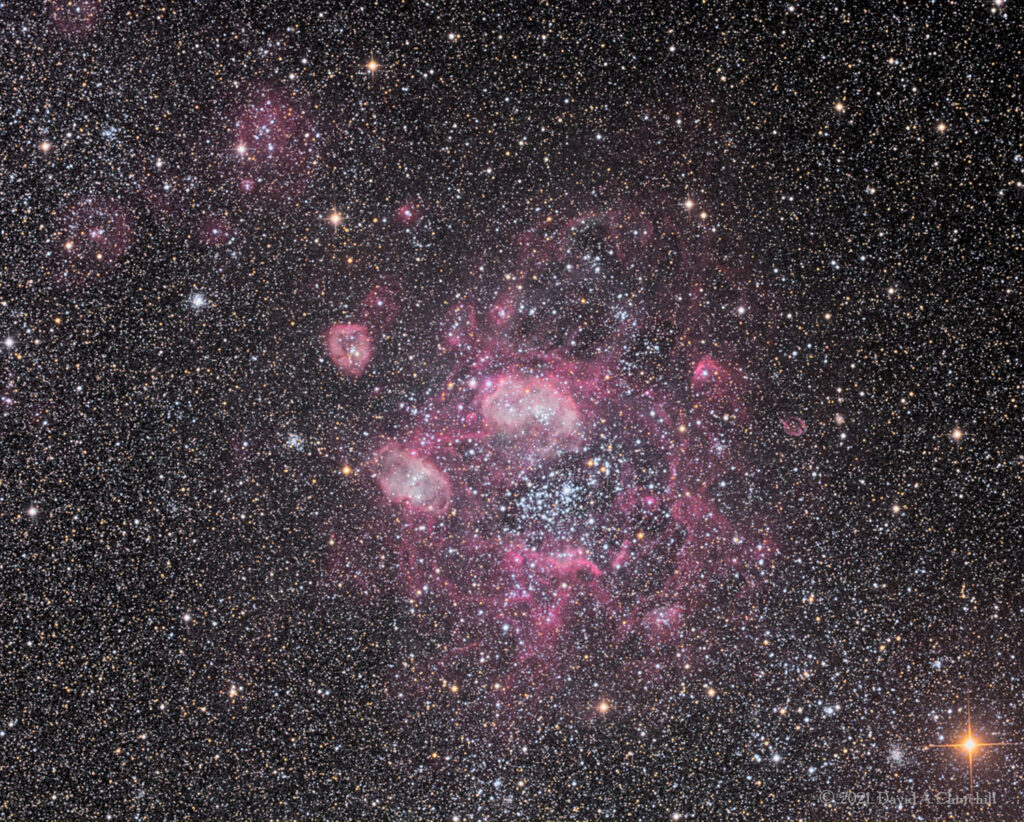NGC 1760
Emission Nebula, Large Magellanic Cloud, Dorado
- Description
- Technical
- Links
NGC 1760 (also known as LMC N11, LHA 120-N 11) is the brightest emission nebula in the north-west part of the Large Magellanic Cloud in the Dorado constellation. The N11 complex is the second largest H II region of that galaxy, the largest being the Tarantula Nebula. It covers an area approximately 6 arc minutes across. It has an elliptical shape and consists of a large bubble, generally clear interstellar area, surrounded by nine large nebulae. It was named by Karl Henize in 1956. When close-up, the nebula has pink clouds of glowing gas which resembles candy floss. It has been well studied over the years and extends 1,000 light-years across. Its particularly notable features include a huge cavity measuring 80 by 60 pc and a five million year old central cluster (NGC 1761). It is surrounded by several ionized clouds where young O stars are forming. Several massive stars are within it, including LH 9, LH 10, LH 13, LH 14. It includes a supernova remnant N11L. In the very centre of NGC 1761 is a bright multiple star HD 32228 which contains a rare blue Wolf-Rayet star, type WC5 or WC6, and an O-type bright giant. When close-up, the nebula has pink clouds of glowing gas which resembles candy floss. It has been well studied over the years and extends 1,000 light-years across. Its particularly notable features include a huge cavity measuring 80 by 60 pc and a five million year old central cluster (NGC 1761). It is surrounded by several ionized clouds where young O stars are forming. Several massive stars are within it, including LH 9, LH 10, LH 13, LH 14. It includes a supernova remnant N11L. In the very centre of NGC 1761 is a bright multiple star HD 32228 which contains a rare blue Wolf-Rayet star, type WC5 or WC6, and an O-type bright giant.
Telescope: Planewave CDK17 (FR) f4.5
Mount: Astro Physics 1600GTO
Camera: QHY16200A/ Integral FW
Guider: Agena Starguide II / SBIG STi
L: 49×10 mins = 490 mins, R: 24×10 mins = 240 mins, G: 24×10 mins = 240 mins, B: 25×10 mins = 250 mins
Total Imaging Time: 20h 20m
Data Imaged remotely over 10 nights during October & November 2021.
Imaged from Observatorio El Sauce, Chile, in partnership with Fred Espenak.
Data acquisition & Processing by David Churchill.
None

